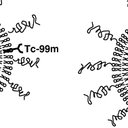Purification and characterization of a chimeric Cry1F delta-endotoxin expressed in transgenic cotton plants.
Sleutelwoorden
Abstract
Cotton plants were genetically modified through the introduction of a synthetic gene that encodes a Bacillus thuringiensis insecticidal protoxin referred to as Cry1F(synpro). This protoxin is a chimeric, full-length delta-endotoxin of 130 kDa, comprised of the core toxin of Cry1Fa2 protein and parts of the nontoxic portions of Cry1Ca3 and Cry1Ab1 proteins, all of which originated from Bacillus thuringiensis. The Cry1F(synpro) expressed in cotton plants confers resistance to lepidopteran pests. The current study was conducted to characterize the Cry1F(synpro) protein expressed in the transgenic cotton event 281-24-236. Results showed that the full-length Cry1F(synpro) produced in the transgenic cotton plants was sensitive to the host cell protease cleavage, resulting in a truncated, biologically active form (core toxin) with an apparent molecular mass of 65 kDa. This truncated toxin was purified by immunoaffinity chromatography from the cotton leaf extract. N-terminal sequencing, peptide mass fingerprinting by MALDI-TOF MS, and internal peptide sequencing by MS/MS confirmed the identity of the truncated core toxin of Cry1F. The mechanism of truncation was explored with Cry1F(synpro) derived from a recombinant Pseudomonas fluorescens. The transgenic cotton-produced Cry1F showed equivalent insecticidal activity to that of Pseudomonas fluorescens-derived Cry1F.



